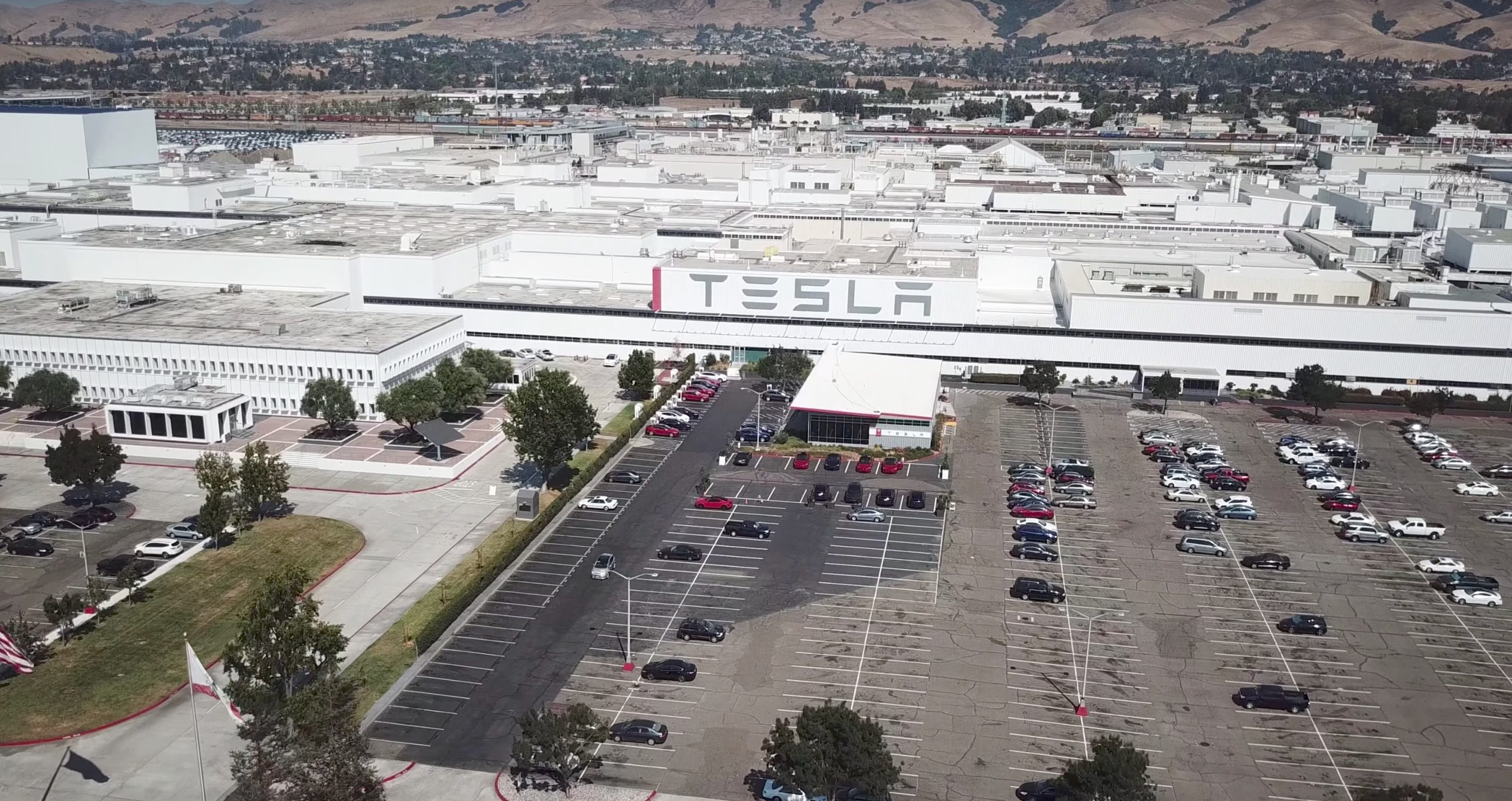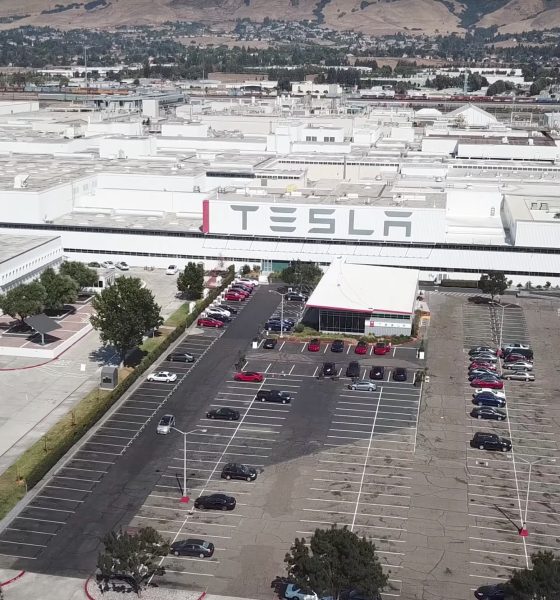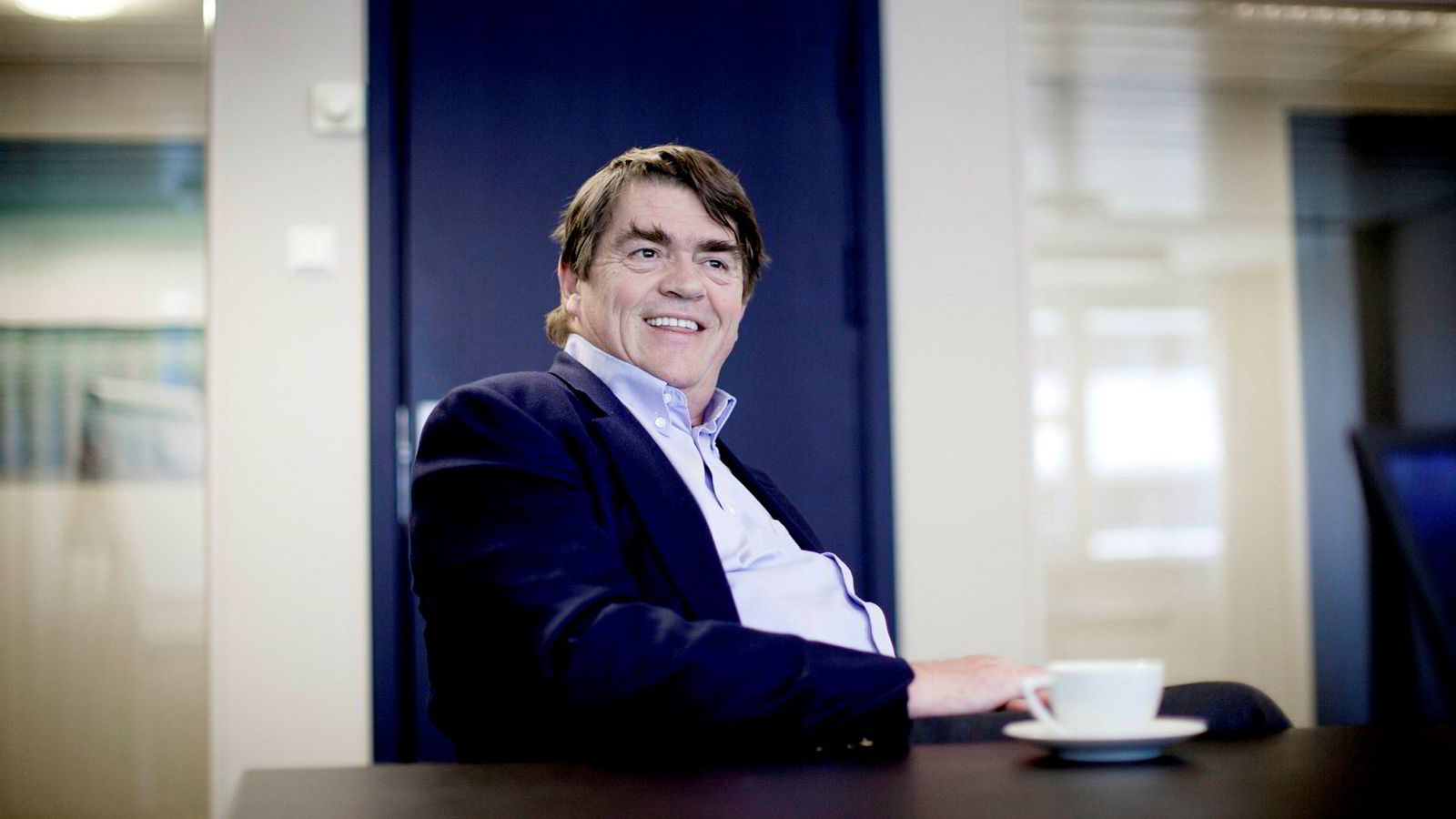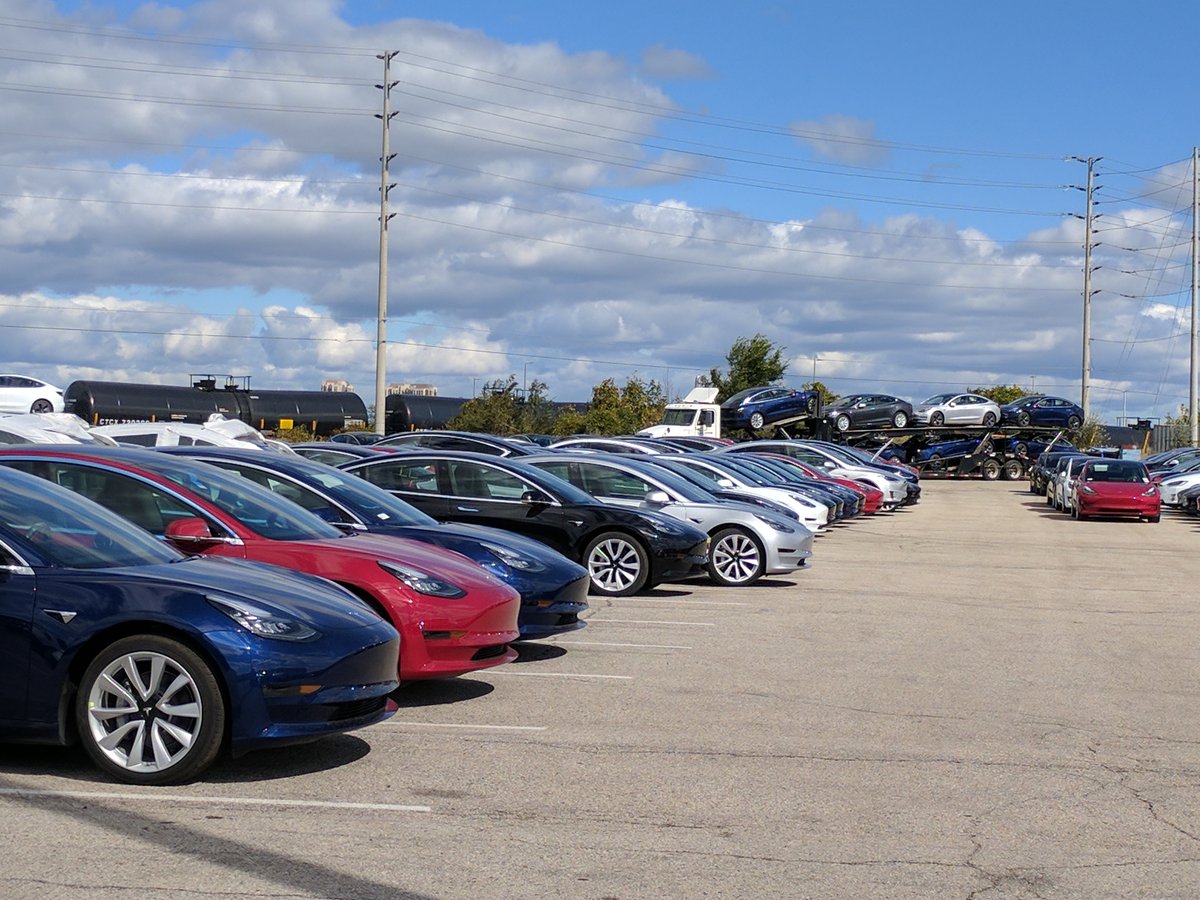

Investor's Corner
Tesla short-seller explains losses, reduced position after TSLA’s rise in late October
Jan Petter Sissener is not a careless investor. Being one of short-sellers betting against Tesla stock (NASDAQ:TSLA), the Norwegian businessman and hedge fund manager has been rewarded in the past due to dips in the electric car maker’s stock. During the third quarter, though, things did not go according to plan, and Sissener Canopus, the fund that Sissener manages, saw its worst loss in two years.
Sissener’s losses on October were almost a stroke of irony. The short-seller noted to Norwegian newspaper Dagens Næringsliv that he actually took a very careful stance at the beginning of the month, even adjusting his fund’s share weight to about 50%. Despite this, Sissener Canopus still fell 5.5%. In a report to his clients, Sissener admitted that one of the main reasons behind the fund’s losses was Tesla, which saw a steep rise at the end of October, fueled by the company’s surprisingly strong third-quarter earnings. Sissener’s bets in two other companies, Transocean and Elkem, did not pan out as well.
Sissener noted to the Norwegian publication that he does not understand Tesla’s third-quarter figures, and that he is presently trying to investigate the company’s numbers. While the fund manager stated that he is not ruling out an increased short position against the company in the near future, Sissener noted that he had reduced his short position on Tesla nonetheless.

“October became a painful month for world stock markets, and although we were very careful and had a lot of indexes, some of our key positions dropped significantly more than the markets. We had timed the market right, but lost on single shares. We have done two things (on Tesla). Firstly, we took a little profit when the stock reached $ 250. Then we weighed a little after the quarterly figures came,” he said.
As Tesla’s short-sellers begin to feel some pressure, some of the company’s supporters are expressing optimistic forecasts for the electric car maker. In a recent interview with CNBC, for example, billionaire investor Ron Baron reiterated his statement that Tesla might be a $1 trillion company by 2030. When asked if he has any reservations about Tesla’s capability to become consistently cash-flow positive, Baron stated that he remains confident in the company and Elon Musk.
“As far as the cash flow goes, when I look at the numbers, it doesn’t appear to be a problem. Elon Musk says it’s not a problem. I take him at his word. And he could have sold equity a year and a half ago at $370, $380 a share, people scrambling to buy, he chose not to. You have these businesses that they invest, and when they’re investing, they penalize profitability. (They’re) at the point now where incremental investments are going to be profitable. They are now doing 5,000 cars a week. They’re gonna be able to do for Model 3, for virtually no additional investment, they’re gonna get to 7,000 cars a week,” Baron said.

Wall Street analyst Maynard Um of Macquarie Research also adopted an optimistic stance on Tesla for the coming quarters. In a note last Thursday, the analyst stated that the company “checks all the boxes” except for one to be included in the S&P 500. While it remains to be seen if Tesla can stay profitable, Um nevertheless stated that a steady demand for the Model S and X, as well as improving production numbers of the Model 3, could allow the electric car maker to be eligible for the S&P 500, possibly sometime next year.
“While (Tesla) still has to prove it can sustain profitability, we believe the company will achieve this last eligibility requirement driven by steady demand for Model S & X, increasing production to meet Model 3 demand, and potential for meaningful (Zero Emission Vehicle) credit revenue,” the analyst wrote.
There is no doubt that Tesla’s third-quarter results were a pleasant surprise for the company’s investors. That said, Tesla’s current strategies, such as the introduction of the Mid Range Model 3, VIN filings at record batches, and Panasonic’s additional battery cell production lines in Gigafactory 1, suggest that Q4 might be even better. In an extensive interview with tech journalist Kara Swisher during the Recode Decode podcast, Elon Musk even noted that Tesla is actually capable of producing 6,000-6,500 Model 3 per week now, though such a feat would require a lot of overtime from the company’s workers.
“We’re certainly over the hump on Model 3 production. For us, making 5,000 cars in a week for Model 3 is not a big deal. That’s just normal. Now we’re working on raising to 6,000 and then 7,000 Model 3s a week, while still keeping costs under control. We could probably do 6,000 or more, maybe 6,500 Model 3s a week right now, but it would have to stress people out and do tons of overtime,” Musk said.
As of writing, Tesla stock is trading at -1.14% at $346.50 per share.
Watch billionaire investor Ron Baron’s take on Tesla’s in the video below.
Disclosure: I have no ownership in shares of TSLA and have no plans to initiate any positions within 72 hours.

Investor's Corner
Tesla stock closes at all-time high on heels of Robotaxi progress

Tesla stock (NASDAQ: TSLA) closed at an all-time high on Tuesday, jumping over 3 percent during the day and finishing at $489.88.
The price beats the previous record close, which was $479.86.
Shares have had a crazy year, dipping more than 40 percent from the start of the year. The stock then started to recover once again around late April, when its price started to climb back up from the low $200 level.
This week, Tesla started to climb toward its highest levels ever, as it was revealed on Sunday that the company was testing driverless Robotaxis in Austin. The spike in value pushed the company’s valuation to $1.63 trillion.
Tesla Robotaxi goes driverless as Musk confirms Safety Monitor removal testing
It is the seventh-most valuable company on the market currently, trailing Nvidia, Apple, Alphabet (Google), Microsoft, Amazon, and Meta.
Shares closed up $14.57 today, up over 3 percent.
The stock has gone through a lot this year, as previously mentioned. Shares tumbled in Q1 due to CEO Elon Musk’s involvement with the Department of Government Efficiency (DOGE), which pulled his attention away from his companies and left a major overhang on their valuations.
However, things started to rebound halfway through the year, and as the government started to phase out the $7,500 tax credit, demand spiked as consumers tried to take advantage of it.
Q3 deliveries were the highest in company history, and Tesla responded to the loss of the tax credit with the launch of the Model 3 and Model Y Standard.
Additionally, analysts have announced high expectations this week for the company on Wall Street as Robotaxi continues to be the focus. With autonomy within Tesla’s sights, things are moving in the direction of Robotaxi being a major catalyst for growth on the Street in the coming year.
Elon Musk
Tesla needs to come through on this one Robotaxi metric, analyst says
“We think the key focus from here will be how fast Tesla can scale driverless operations (including if Tesla’s approach to software/hardware allows it to scale significantly faster than competitors, as the company has argued), and on profitability.”

Tesla needs to come through on this one Robotaxi metric, Mark Delaney of Goldman Sachs says.
Tesla is in the process of rolling out its Robotaxi platform to areas outside of Austin and the California Bay Area. It has plans to launch in five additional cities, including Houston, Dallas, Miami, Las Vegas, and Phoenix.
However, the company’s expansion is not what the focus needs to be, according to Delaney. It’s the speed of deployment.
The analyst said:
“We think the key focus from here will be how fast Tesla can scale driverless operations (including if Tesla’s approach to software/hardware allows it to scale significantly faster than competitors, as the company has argued), and on profitability.”
Profitability will come as the Robotaxi fleet expands. Making that money will be dependent on when Tesla can initiate rides in more areas, giving more customers access to the program.
There are some additional things that the company needs to make happen ahead of the major Robotaxi expansion, one of those things is launching driverless rides in Austin, the first city in which it launched the program.
This week, Tesla started testing driverless Robotaxi rides in Austin, as two different Model Y units were spotted with no occupants, a huge step in the company’s plans for the ride-sharing platform.
Tesla Robotaxi goes driverless as Musk confirms Safety Monitor removal testing
CEO Elon Musk has been hoping to remove Safety Monitors from Robotaxis in Austin for several months, first mentioning the plan to have them out by the end of 2025 in September. He confirmed on Sunday that Tesla had officially removed vehicle occupants and started testing truly unsupervised rides.
Although Safety Monitors in Austin have been sitting in the passenger’s seat, they have still had the ability to override things in case of an emergency. After all, the ultimate goal was safety and avoiding any accidents or injuries.
Goldman Sachs reiterated its ‘Neutral’ rating and its $400 price target. Delaney said, “Tesla is making progress with its autonomous technology,” and recent developments make it evident that this is true.
Investor's Corner
Tesla gets bold Robotaxi prediction from Wall Street firm
Last week, Andrew Percoco took over Tesla analysis for Morgan Stanley from Adam Jonas, who covered the stock for years. Percoco seems to be less optimistic and bullish on Tesla shares, while still being fair and balanced in his analysis.

Tesla (NASDAQ: TSLA) received a bold Robotaxi prediction from Morgan Stanley, which anticipates a dramatic increase in the size of the company’s autonomous ride-hailing suite in the coming years.
Last week, Andrew Percoco took over Tesla analysis for Morgan Stanley from Adam Jonas, who covered the stock for years. Percoco seems to be less optimistic and bullish on Tesla shares, while still being fair and balanced in his analysis.
Percoco dug into the Robotaxi fleet and its expansion in the coming years in his latest note, released on Tuesday. The firm expects Tesla to increase the Robotaxi fleet size to 1,000 vehicles in 2026. However, that’s small-scale compared to what they expect from Tesla in a decade.
Tesla expands Robotaxi app access once again, this time on a global scale
By 2035, Morgan Stanley believes there will be one million Robotaxis on the road across multiple cities, a major jump and a considerable fleet size. We assume this means the fleet of vehicles Tesla will operate internally, and not including passenger-owned vehicles that could be added through software updates.
He also listed three specific catalysts that investors should pay attention to, as these will represent the company being on track to achieve its Robotaxi dreams:
- Opening Robotaxi to the public without a Safety Monitor. Timing is unclear, but it appears that Tesla is getting closer by the day.
- Improvement in safety metrics without the Safety Monitor. Tesla’s ability to improve its safety metrics as it scales miles driven without the Safety Monitor is imperative as it looks to scale in new states and cities in 2026.
- Cybercab start of production, targeted for April 2026. Tesla’s Cybercab is a purpose-built vehicle (no steering wheel or pedals, only two seats) that is expected to be produced through its state-of-the-art unboxed manufacturing process, offering further cost reductions and thus accelerating adoption over time.
Robotaxi stands to be one of Tesla’s most significant revenue contributors, especially as the company plans to continue expanding its ride-hailing service across the world in the coming years.
Its current deployment strategy is controlled and conservative to avoid any drastic and potentially program-ruining incidents.
So far, the program, which is active in Austin and the California Bay Area, has been widely successful.








